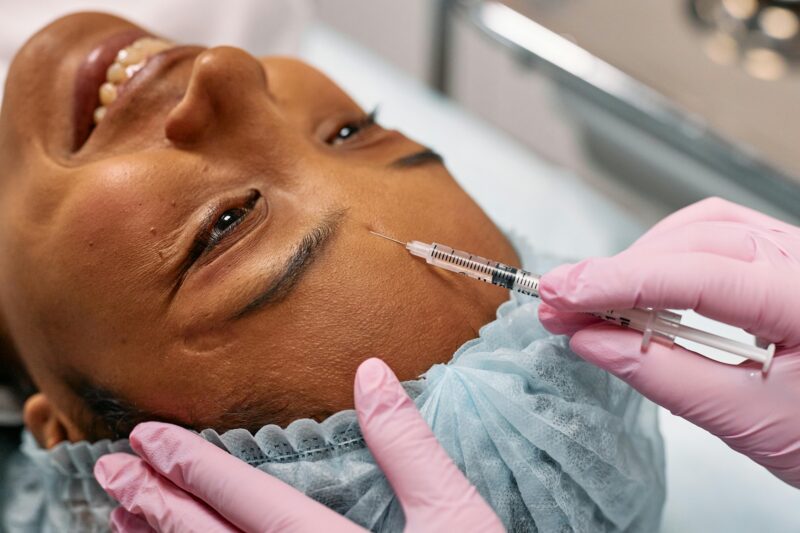The minimalist approach to life extends beyond decluttered homes and capsule wardrobes—it encompasses smart, streamlined business decisions.
Professional liability insurance represents the ultimate minimalist strategy for aesthetic practitioners seeking maximum protection with minimal complexity.
Understanding Professional Indemnity Coverage for Aesthetic Practitioners
Malpractice insurance covers legal costs when an aesthetic nurse is sued for negligence, such as an infection caused by a Botox injection.
Medical malpractice insurance serves as your essential safety net in today’s litigation-heavy environment.
Professional indemnity insurance protects against claims arising from professional services rendered incorrectly or inadequately.
The streamlined approach to risk management starts with understanding your exposure points.
Aesthetic procedures carry inherent risks that even the most skilled practitioners cannot completely eliminate.
Medical Malpractice Insurance: The Foundation of Minimalist Risk Management
The cost of the cosmetic nurse policy may vary by employment status and location, but for most it will range from approximately $1,187 to approximately $1,450.
Annual premiums represent a fraction of potential lawsuit costs, making coverage an economical choice.
Medical malpractice lawsuits average $350,000 in settlements, far exceeding most practitioners’ annual insurance costs.
The minimalist philosophy embraces prevention over reaction—insurance embodies this principle perfectly.
Smart practitioners invest in comprehensive coverage rather than hoping problems never arise.
Professional Liability Insurance: Streamlined Protection for Modern Aesthetics
Professional liability coverage extends beyond basic malpractice to include business-related claims.
Wrongful termination, discrimination, and employment practices violations fall under expanded liability protection.
Usually a standard policy offers up to £5m indemnity cover for any one claim or series of claims during the policy period.
High coverage limits provide peace of mind without requiring multiple policy types.
The one-policy solution aligns with minimalist principles of simplicity and efficiency.
Cosmetic Surgery Insurance: Premium Protection for High-Risk Procedures
Cosmetic surgery procedures command higher insurance premiums due to increased liability exposure.
Board-certified plastic surgeons pay premium rates reflecting their elevated risk profiles.
Botox injections and dermal fillers require specialized coverage due to potential complications.
Non-surgical procedures still carry significant liability despite their minimally invasive nature.
Insurance carriers assess risk based on procedure types, practitioner credentials, and claims history.
Dermatology Malpractice Coverage: Specialized Protection for Skin Specialists
Dermatological procedures require specialized malpractice coverage addressing unique practice risks.
Laser treatments, chemical peels, and surgical excisions present distinct liability challenges.
Misdiagnosis claims represent the most common dermatology malpractice allegations.
Delayed diagnosis of skin cancer generates the highest settlement amounts in dermatology.
Professional liability insurance specifically designed for dermatologists addresses these specialized risks.
Medical Spa Insurance: Comprehensive Coverage for Modern Wellness Centers
This Cosmetic Nurse and Estheticians Malpractice Insurance program includes cover the entire salons or medispa.
Medical spas require comprehensive insurance covering multiple practitioners and service types.
General liability, professional liability, and property coverage combine into streamlined policy packages.
Staff coverage ensures protection for nurses, estheticians, and support personnel under one policy.
The multi-practitioner approach reduces administrative burden while maximizing protection.
Aesthetic Nurse Insurance: Targeted Protection for Specialized Practitioners
Aesthetic nurse insurance, a crucial form of professional liability insurance, is designed to protect nurses specializing in non-surgical cosmetic procedures.
Registered nurses performing aesthetic procedures need specialized coverage addressing their unique role.
Scope of practice violations represent significant risk factors for aesthetic nursing professionals.
Independent contractors require individual policies separate from employer-sponsored coverage.
Employed nurses should verify their coverage extends to aesthetic procedures performed.
Legal Defense Coverage: Your First Line of Financial Protection
Legal defense costs accumulate rapidly even in frivolous lawsuits requiring dismissal.
Average legal fees exceed $50,000 for defended medical malpractice claims.
Prior acts coverage protects against claims arising from previously performed procedures.
Tail coverage continues protection after policy cancellation or career changes.
The minimalist approach prioritizes comprehensive coverage over multiple separate policies.
Claims Management: Streamlined Approach to Legal Challenges
Professional insurance carriers provide dedicated claims management teams for policyholder support.
Early intervention strategies minimize claim severity and resolution timeframes.
Expert witnesses, legal counsel, and settlement negotiations fall under carrier management.
Practitioners maintain control over case direction while leveraging carrier expertise.
The hands-off approach allows practitioners to focus on patient care during legal proceedings.
Risk Assessment: Identifying Your Unique Liability Exposure
Geographic location significantly impacts malpractice claim frequency and severity.
Urban practices face higher claim rates due to increased patient volume and expectations.
Procedure complexity directly correlates with insurance premium calculations.
Patient demographics influence claim likelihood and potential settlement amounts.
Practice size affects both premium costs and coverage requirements.
Premium Calculations: Understanding Insurance Pricing Factors
Insurance carriers evaluate multiple risk factors when calculating annual premiums.
Claims history represents the single most significant pricing factor for renewal rates.
Continuing education credits may qualify practitioners for premium discounts.
Board certifications and advanced training typically reduce insurance costs.
Group policies often provide cost savings compared to individual coverage.
Coverage Limits: Balancing Protection with Affordability
Standard Limits of Indemnity range from $2.25 to $5.65 million, but certain procedures may be offered more.
Higher coverage limits provide additional protection but increase annual premium costs.
Per-occurrence limits define maximum payouts for individual claims.
Aggregate limits establish total annual payout caps across all claims.
The minimalist approach balances adequate protection with reasonable premium costs.
Policy Exclusions: Understanding Coverage Limitations
Standard policies exclude intentional acts, criminal behavior, and substance abuse-related incidents.
Experimental procedures and off-label device usage may void coverage.
Business disputes and contractual violations typically fall outside professional liability scope.
Employment practices violations require separate coverage endorsements.
Reading policy exclusions prevents coverage gaps during critical moments.
Regulatory Compliance: Meeting Professional Standards
State licensing boards often mandate minimum insurance coverage levels.
Medicare and Medicaid participation may require specific coverage amounts.
Hospital credentialing processes typically verify current malpractice insurance.
Professional associations may offer group coverage options for members.
Compliance requirements vary significantly between states and practice types.
Technology Integration: Modern Insurance Management Solutions
Digital policy management platforms streamline certificate requests and renewals.
Mobile applications provide instant access to policy details and carrier contacts.
Automated premium payment systems eliminate missed payment risks.
Electronic claims reporting accelerates the response process during emergencies.
The paperless approach aligns with minimalist organizational principles.
International Coverage: Protection for Global Practitioners
Telemedicine consultations may require additional coverage endorsements.
Medical missions and volunteer work often fall outside standard policy scope.
International procedures and training require specialized coverage arrangements.
Cross-border liability issues complicate standard insurance coverage.
Global practitioners need comprehensive policies addressing international exposure.
Alternative Risk Management: Beyond Traditional Insurance
Risk retention groups offer specialized coverage for niche aesthetic practices.
Self-insurance options may benefit large practices with strong financial reserves.
Captive insurance companies provide customized coverage for enterprise-level operations.
Professional organizations sometimes offer group self-insurance programs.
The minimalist approach evaluates all options before selecting optimal coverage.
Cost-Benefit Analysis: Maximizing Insurance Value
Annual premium costs represent minimal percentages of practice revenue.
Uninsured claim costs can exceed lifetime practice earnings.
Business interruption coverage protects income during legal proceedings.
Reputation management services help maintain practice viability post-claim.
The investment perspective treats insurance as essential business infrastructure.
Emergency Response: Immediate Steps After Incidents
Immediate carrier notification triggers rapid response protocols.
Documentation preservation protects against evidence tampering allegations.
Patient communication strategies minimize additional legal exposure.
Legal counsel coordination ensures consistent messaging across all parties.
The systematic approach reduces panic while maximizing protection benefits.
Practice Integration: Seamlessly Incorporating Insurance Protection
Staff training ensures proper incident reporting and documentation procedures.
Patient consent processes should reference insurance coverage and limitations.
Marketing materials must comply with carrier requirements and restrictions.
Record-keeping systems should facilitate rapid claim documentation.
The holistic approach integrates insurance considerations into daily operations.
Future Planning: Evolving Coverage for Changing Practices
Technology advances require ongoing coverage evaluation and updates.
New procedure offerings may necessitate policy endorsements or changes.
Practice expansion into new locations triggers additional coverage requirements.
Retirement planning should address tail coverage and policy transitions.
The forward-thinking approach anticipates changes before they impact coverage.
Selection Criteria: Choosing the Right Insurance Partner
Carrier financial strength ratings indicate long-term viability and claim-paying ability.
Industry specialization ensures understanding of aesthetic practice unique risks.
Claims handling reputation affects practitioner experience during difficult periods.
Premium competitiveness must balance with comprehensive coverage offerings.
The research-based approach evaluates multiple carriers before committing.
Documentation Requirements: Maintaining Comprehensive Records
Incident reports should include detailed factual accounts without admissions of fault.
Patient communications require careful documentation to support defense strategies.
Continuing education records demonstrate ongoing professional competency.
Policy documents and certificates need organized storage for easy retrieval.
The systematic approach treats documentation as insurance investment protection.
Conclusion: Embracing Minimalist Risk Management
Aesthetic liability insurance represents the epitome of minimalist risk management philosophy.
One comprehensive policy eliminates multiple coverage gaps while providing maximum protection.
Professional practitioners prioritize patient care over litigation concerns through adequate coverage.
The streamlined approach to business protection allows focus on core aesthetic services.
Smart insurance selection transforms potential catastrophic losses into manageable premium payments.
Investment in comprehensive coverage protects both professional reputation and financial security.
The minimalist aesthetic practitioner chooses insurance based on protection value rather than premium costs.
Proper coverage enables confident practice growth without constant liability concerns.
Professional success requires balancing patient care excellence with comprehensive risk management.
Aesthetic liability insurance provides the foundation for sustainable, stress-free practice operations.









